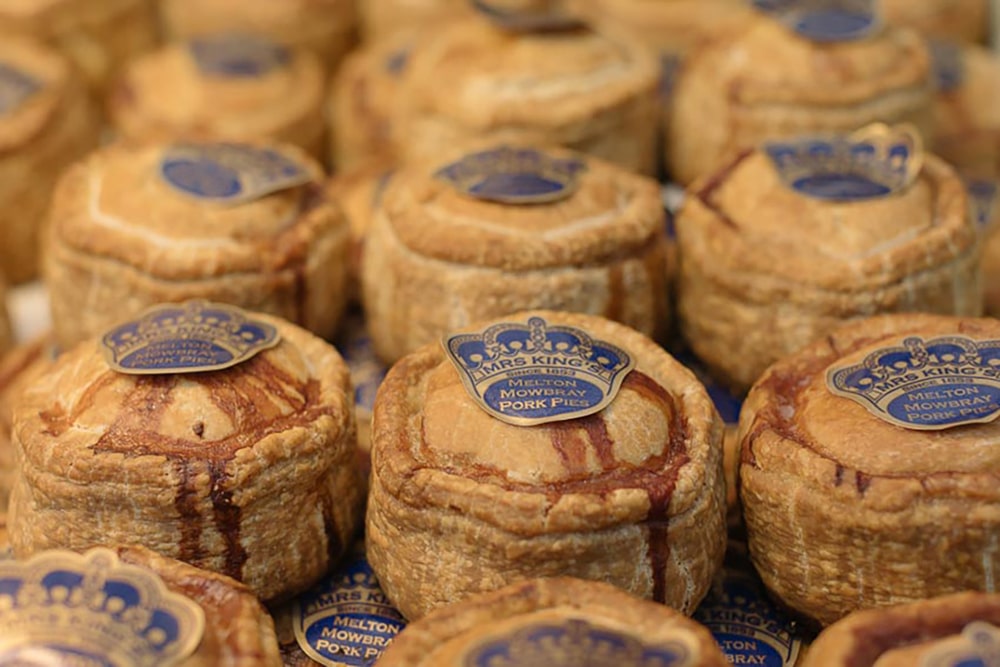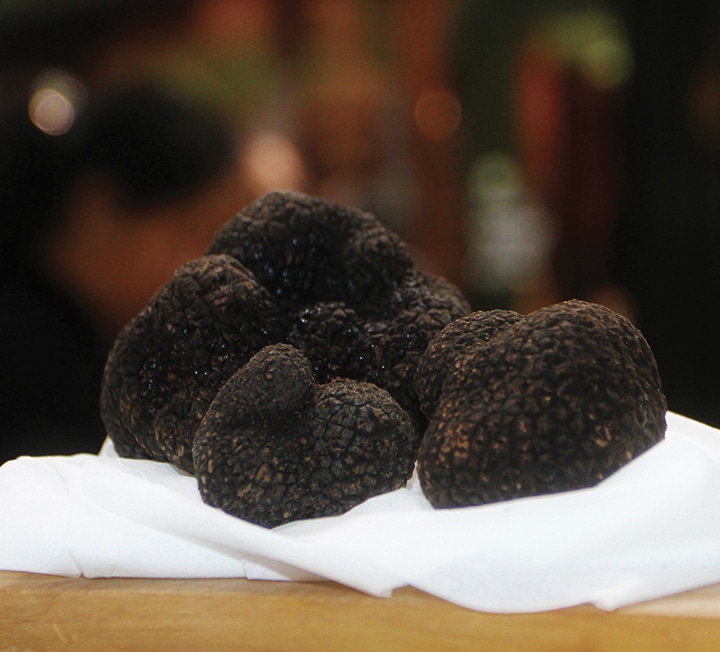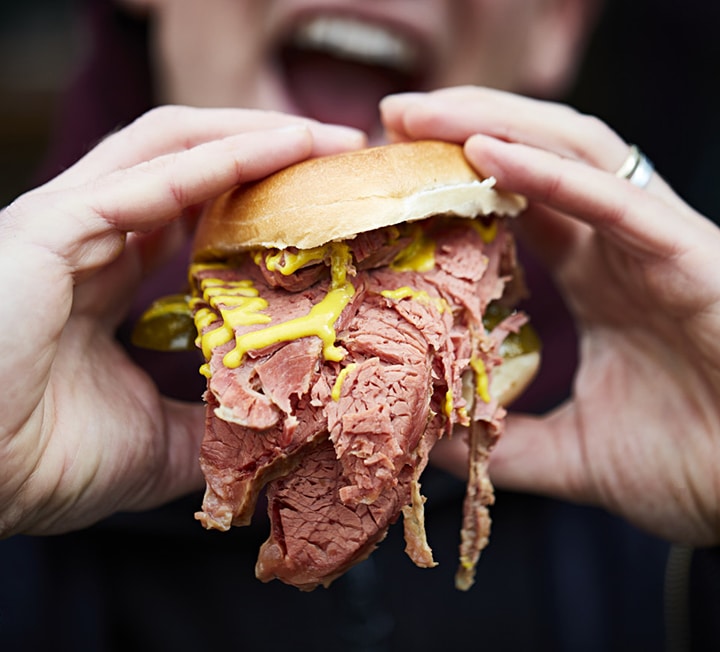What it takes: Melton Mowbray pork pies
Paul Hartland of Mrs Kings Pork Pies on the challenges involved in the making of an east Midlands classic


“THE KEY IS WORKING WITH GREAT SUPPLIERS. OUR PORK HAS BEEN SUPPLIED BY THE SAME PRODUCERS FOR 25 YEARS”
What are the origins of the Melton Mowbray pork pie?
Bakers in the Melton Mowbray area began producing these pies for gentlemen who had come up for the hunting. They would put them in their saddlebags and eat them while they were out. They were tasty and filling, and eating them wouldn’t interrupt the hunt for too long. They’ve come a long way since then.
In 2007, the Melton Mowbray pork pie was granted Protected Geographical Indication (PGI) status by the EU, recognising its historical, cultural and culinary importance. That was a really important moment for us. Like a lot of artisanal products, making these pies is about keeping the process simple but learning the skills and expertise to do so very, very well. There is no secret to our ingredients: all we use is flour, water, lard, salt, pork and a natural pork jelly. That simplicity can leave you vulnerable to cheap, poor quality imitations.
How do you maintain those standards?
The key is working with great suppliers. At Mrs Kings Pork Pies, our pork has been supplied by the same producers for 25 years. We believe it is really important to know where our pork has come from. We want to know that the pigs were raised well and that the slaughter and butchery have all been done to the highest standards. We have used the same flour suppliers for a similar length of time. The benefits go far beyond the trust that is vital to any relationship – it is also about understanding each other’s production methods and requirements. Our suppliers know exactly what we are looking for and the qualities we demand in our ingredients. Whether it is the meat, lard or flour, they know what is and is not acceptable to us.
Give us an example of this close relationship.
We use pork shoulder in our pork pies, as it has the best meat to fat ratio for roasting, which is in effect what is happening to the pork once it is in the oven. We used to bone the joints ourselves, but, as we got busier this became harder. After talking things over with the suppliers, they sent their best butchers over to learn how we handled and butchered the joints. We now trust them to bone the joints for us. As you can imagine, entrusting an outside company with such a vital process was a real step. We still examine every joint we get before accepting it, but we very rarely find any issue.
What is the process for making the pies?
In some ways, it is very much a scaled-up version of what would happen in a home kitchen. After the butchers break down the shoulders, the meat is put through a machine that chops rather than grinds it – you get a coarse mince, reminiscent of hand-chopped meat, where you can still see chunks of pork.
For every pie, a ball of pastry is shaped around a wooden block by hand – this is what the term ‘hand-raised’ refers to. We then put a ball of meat into the casing, then put the pastry lid on and crimp it, also by hand. This crimping makes the lid secure. as well as adding a decorative touch. Once assembled, we put the pies in the fridge, as pastry cooks better when cold. The pies then go into the oven straight from the fridge.
What happens once they are out of the oven?
We put them aside on baking trays, so that the pies can cool down and the meat can rest. Then we add the jelly that surrounds the meat. We make this by boiling pigs’ trotters for several hours to render out the gelatine. This gives you a lovely natural jelly with a deep pork flavour. We don’t have to do anything to it other than warm it up and pour it through a hole at the top of the pie into the gap that has developed.
Is this very different from large-scale industrial production?
The usual industrial method involves the casing and lids being shaped and attached by machines, with the pork filling being piped in. Melton Mowbray pies have to be baked free-standing, which leads to the characteristic bulge, whereas most commercial pies are baked in hoops to produce a regimented, uniformly shaped product. And finally, they’ll use a jelly made from commercial gelatine, with flavourings added to mimic the pork flavour. It is a very different thing to the pies we produce.
Where did you learn the skills to make these pies?
I was taught by my wife’s grandfather Kenneth Parr, which was a real privilege, as he was widely considered the country’s best master piemaker. It was he who bought the historic Mrs Kings company, which was known for the provenance and quality of its pies. As each of my brothers joined the business, they learned his methods as well. My son will join the company when he finishes his studies. He has been helping out since he was a boy and has that same passion.
So, the craft of the master piemaker is still alive?
Absolutely: ‘simple’ does not mean easy. It took me about five years to master all the processes necessary to produce high quality pork pies on a commercial scale. You need to understand how to handle the meat and cook it to its best, but you also have to understand working with pastry. You have butchers and bakers, but a good piemaker needs to combine the best of both skills. My role is to make sure that everything here is perfect, from the ingredients that come in to the pies that go out. It takes a lot of time and effort from everyone, but the first bite of one of our pies will convince you it is all worth it.


